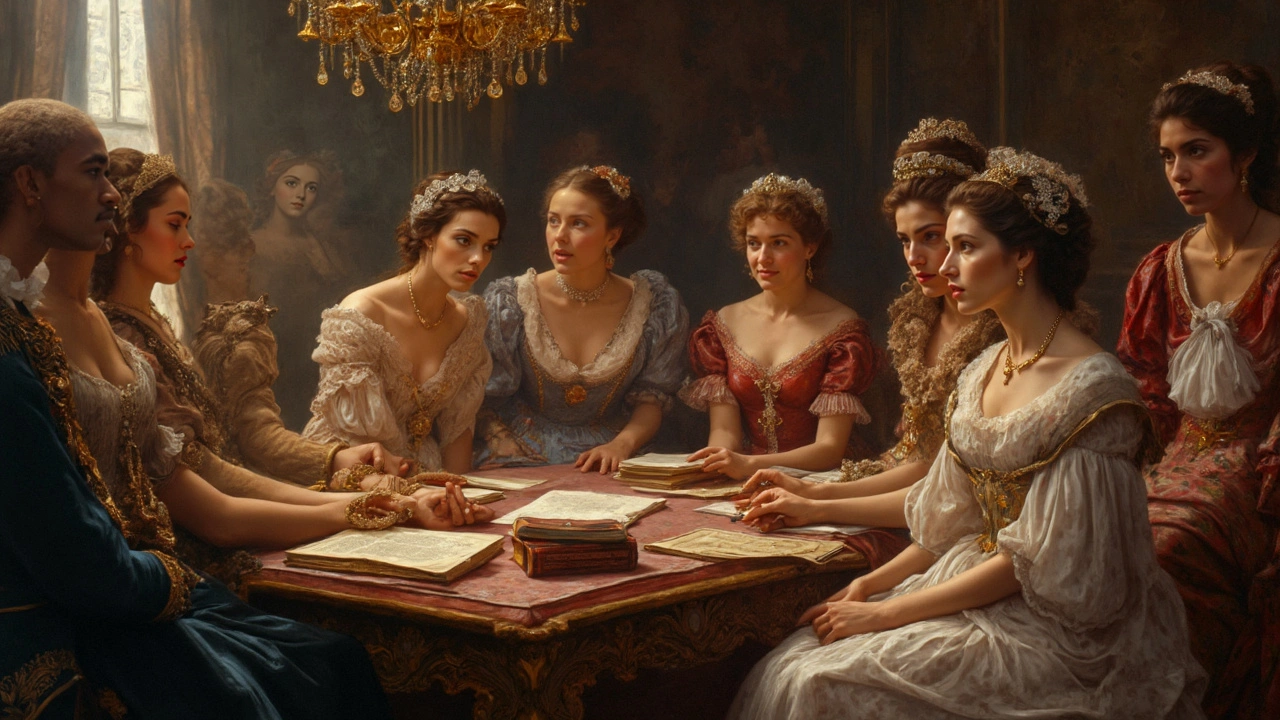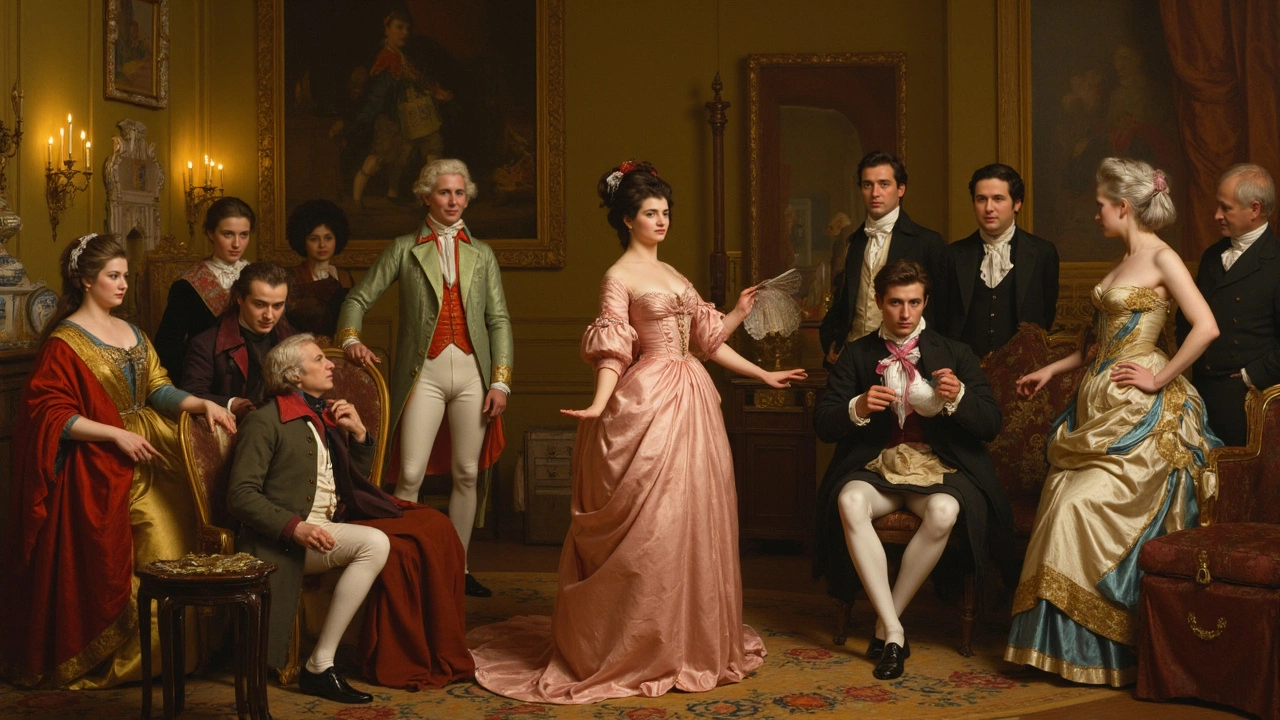Courtesan Influence on Art and Culture: How Courtesans Shaped Creative History
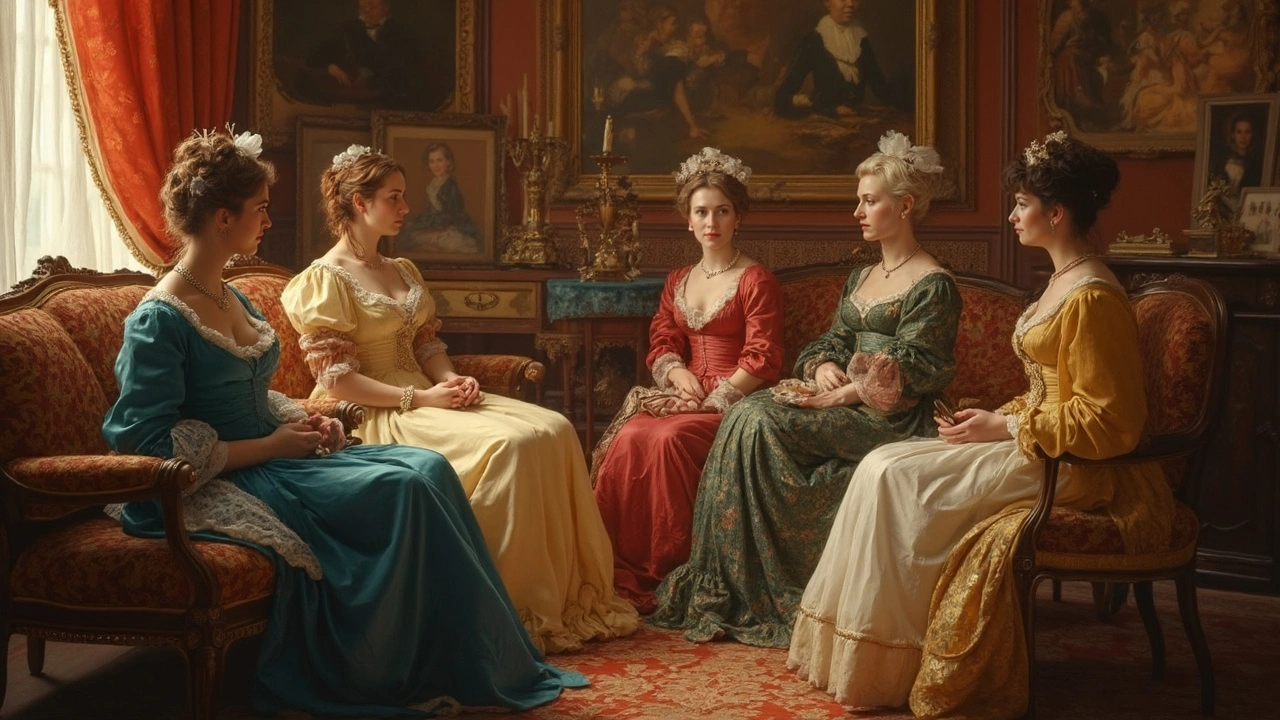
If you think courtesans were just background figures in history, get ready for a wake-up call. The world of art and culture owes a lot to these smart, bold women. They swapped secrets with the most creative minds, steered trends, and were often the quiet forces behind ground-breaking art.
Ever wondered how the wild Paris salons or dramatic Japanese woodblock prints got started? Courtesans weren't just present—they set the mood and sometimes even called the shots. Famous painters, poets, and musicians gravitated toward them, looking for fresh ideas and a different point of view.
What’s wild is how often their mark shows up in places you’d never expect. That catchy hairstyle or jaw-dropping painting you like? There’s a good chance a courtesan had a hand in it. Stick around if you’re curious about how these women changed what people wore, read, and listened to—and why their influence is still hiding in plain sight.
- Key Courtesans Who Changed the Arts
- How Courtesans Drove Fashion and Trends
- Courtesans in Famous Paintings and Books
- Courtesan Influence on Music and Theater
- Unpacking the Myths and Real Legacy
Key Courtesans Who Changed the Arts
Everyone talks about kings, queens, and artists, but let’s give credit to the courtesan figures who had real pull in the world of art and culture. Some weren’t shy about shaking up society, and you’ll see their fingerprints all over famous galleries and history books.
Take Veronica Franco from 16th-century Venice. She was more than just a beauty—she published poetry, debated intellectuals, and became a muse for countless Renaissance artists. Her writing inspired more than a few paintings from painters drawn to her wit and charm. In fact, art historians have traced at least three classic Venetian portraits back to her circle.
Quick jump over to France, and you meet Ninon de l’Enclos. Parisian artists, writers, and even politicians looked up to her. Her home was like a private club for creative types. Famous writers like Molière actually credited some of their best stage works to ideas sparked in her salon.
Not just Europe—let’s talk about Japan’s Yoshiwara district. Some of its Oiran courtesans weren’t just models for the era’s woodblock prints—they helped decide what counted as “beauty.” Artists like Kitagawa Utamaro made entire print series featuring real courtesans, and their styles kicked off beauty trends for years.
You can’t skip Cora Pearl, the 19th-century sensation who stormed Paris’s opera and art scene. She turned up at every major gala, often dressed more outlandishly than the performers. Artists like Edgar Degas and Édouard Manet were regulars at her parties, grabbing fashion and vibe notes for paintings and stage scenes.
Here’s a quick snapshot table on who’s who and what they did:
| Name | Where/When | Main Impact |
|---|---|---|
| Veronica Franco | Venice, 1500s | Pioneer poet, inspired Renaissance art |
| Ninon de l’Enclos | Paris, 1600s | Salon leader, shaped literature & theater |
| Japanese Oiran (multiple) | Edo, 1700s-1800s | Set trends in beauty, featured in woodblock prints |
| Cora Pearl | Paris, 1800s | Icon of style, inspired painters and stage shows |
So if you spot a wild new look in an old painting, or you love a story set in a glitzy salon, there’s a decent chance a courtesan was calling the shots behind the scenes. Knowing about these women gives you a brand-new angle on art history—and maybe makes you see those museum trips in a whole new light.
How Courtesans Drove Fashion and Trends
When you think of trendsetters, you might picture fashion icons or pop stars. But honestly, courtesans did it first—and often way better. Back in 17th and 18th century France, courtesans like Madame de Pompadour didn't just follow trends; they made them. She worked closely with royal designers and introduced pastel wigs, detailed gowns, and even helped make porcelain figurines chic. The French court literally changed its style to keep up with her looks.
Fast forward to Japan: Oiran courtesans turned heads with their tall combs, patterned silks, and dramatic make-up. Regular folks couldn't copy all the details (some styles were strictly reserved for the professional class), but bits and pieces went mainstream almost overnight. Kabuki actors, who were Japan’s earliest celebs, borrowed courtesan fashion and made it part of their shows.
You’ll see this pattern all over—artists and writers documented courtesan style because it was new and different. People wanted to wear what they wore. Here’s what set their fashion influence apart:
- Mixing high and low culture: Courtesans weren’t afraid to blend previous ‘no-nos’—like pairing men’s hats with women’s dresses—and people loved it.
- Signature beauty looks: White-lead make-up, bold eye-liner, dramatic hairdos. It all caught on fast, even if some trends now seem over-the-top.
- Early influencers: Artists like Manet painted Parisian courtesans. Their style in those portraits got copied by the upper classes (and even ended up on the runway decades later).
Numbers prove their reach. In Paris, it’s estimated that the most famous courtesans helped boost silk prices by 12% because everyone wanted the same dresses. Designers like Charles Frederick Worth owed a chunk of their success to courtesans hyping their looks in public and private parties.
| Trend | Started by (Courtesan) | Year | Lasting Impact? |
|---|---|---|---|
| Powdered pastel wigs | Madame de Pompadour | 1740s | Inspired luxury haircare trends for centuries |
| Patterned kimono layers | Oiran (Japan) | Edo period (1603-1868) | Kimono styling still popular today |
| Showy jewelry at salons | Veronica Franco (Venice) | 1570s | Celebrity jewelry endorsements today |
So the next time a trend seems new and bold, check your history books. There’s a good chance a courtesan wore it first and got everyone else to notice.
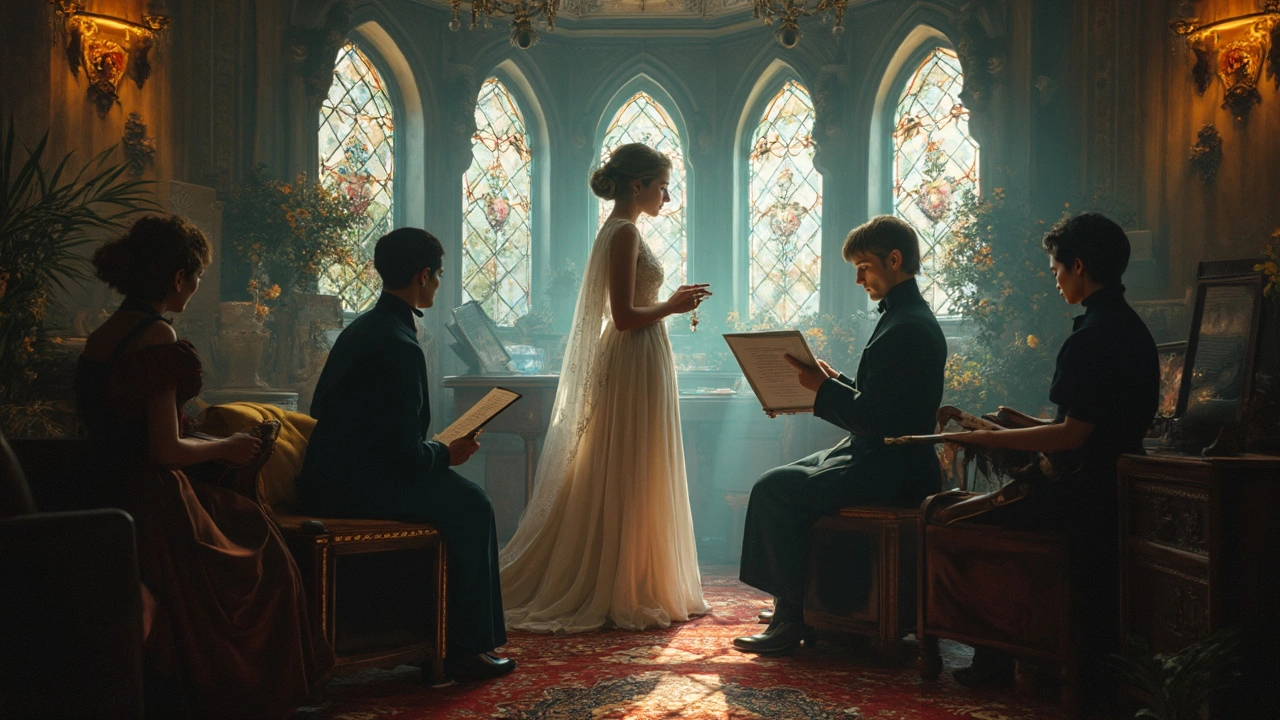
Courtesans in Famous Paintings and Books
Courtesans weren’t just behind the scenes—they were front and center in some of the most iconic art. Just take Édouard Manet’s “Olympia” from 1863. The model for that painting, Victorine Meurent, was known for her independence and ties to Parisian courtesans. This wasn’t just art for art’s sake. Manet used her pose and attitude to challenge how society saw women, especially those who bent the rules. Courtesan influence on art doesn’t get much more obvious than this.
Jump to Venice in the sixteenth century and you’ll hit another level. The high-class courtesans there had official portraits painted by the likes of Titian and Palma Vecchio. These weren’t hush-hush works, either—they ended up in the homes of nobles and were shown off at parties. Writer Veronica Franco, a famous Venetian courtesan, actually published her own poems and letters. People still read them to get a taste of the culture back then. Franco herself once said:
"In every age there have been women like me, who, contrary to custom and law, preferred to pursue their own paths rather than submit to prescribed roles."
It wasn’t just Europe, either. In Japan, oiran and geisha were often the stars of vibrant woodblock prints called ukiyo-e. These images shaped how people dressed, acted, and even decorated their homes. Artists like Kitagawa Utamaro made courtesans the main event, not just background flavor.
If you look at classic literature, you’ll spot courtesan influence right away. Alexandre Dumas’ “La Dame aux Camélias” tells the story of Marguerite Gautier, based on real-life courtesan Marie Duplessis. Side-note: this story inspired Verdi’s opera La Traviata. The plots and characters in books like this shaped European views on romance and what people considered “acceptable” relationships in society.
Want proof of just how common this was? Check this table of famous artworks and books that put courtesans in the spotlight:
| Artwork/Book | Artist/Author | Courtsean Featured | Year |
|---|---|---|---|
| Olympia | Édouard Manet | Victorine Meurent (inspired by courtesan circles) | 1863 |
| Portrait of Veronica Franco | Attributed to Tintoretto | Veronica Franco | Late 1500s |
| Ukiyo-e series | Kitagawa Utamaro | Various Edo-period courtesans and geisha | 1790s |
| La Dame aux Camélias | Alexandre Dumas (fils) | Marie Duplessis (as Marguerite) | 1848 |
| Nana | Émile Zola | An actress and courtesan in Paris | 1880 |
So, next time you see a so-called classic art piece or dive into a famous book, ask yourself: Was a courtesan the real inspiration? Knowing where the influence comes from helps you see just how far their reach went in shaping modern taste and attitudes.
Courtesan Influence on Music and Theater
Courtesans have left a pretty loud mark in the world of music and theater, even if you never saw their names on the playbill. Think about Paris in the 1800s or Venice back in the Renaissance—elite circles buzzed with music and drama, and courtesans pulled the strings behind the scenes way more than people realized. Composers, playwrights, and musicians gravitated towards the wit and charisma of these women for inspiration and even material for their wildest characters.
Look at France's Belle Époque: famous composers like Offenbach wrote operettas with characters openly modeled on real-life courtesans. The opera 'La Traviata' by Verdi? Its heroine, Violetta, was inspired by a Parisian courtesan named Marie Duplessis, who was also the muse for the novel and play 'La Dame aux Camélias.' Tons of leading soprano roles owe their drama, heartbreak, and rebellious streaks to the stories of strong courtesans who defied social rules.
In India, the tawaifs—a kind of musical courtesan—helped develop and preserve classical genres like thumri, dadra, and kathak dance. Some of the biggest music stars in 19th-century Lucknow and Delhi were tawaifs. They taught royalty and rich patrons how to sing, play, and dance, basically keeping the art forms alive at a time when nobody else was training new talent.
Japan offers another solid example. Geishas, who were skilled entertainers (sometimes confused with courtesans, but definitely trendsetters), ran teahouses where famous shamisen players and traditional playwrights tested new material. If a song or a new dance routine landed well in a geisha house, you bet it found its way to the theaters soon after.
Cultural impact by the numbers? Let’s look at a quick breakdown:
| Country | Famous Courtesan-Linked Works | Estimated Performances (19th-20th C.) |
|---|---|---|
| France | La Traviata, La Dame aux Camélias | Over 1,500 (Paris alone) |
| India | Kathak Dance, Thumri music | Thousands across royal courts |
| Japan | Kabuki (influenced by geisha entertainment) | Regularly in key Osaka and Tokyo theaters |
Want to spot the courtesan touch in theater today? Check stories with bold, multi-layered women at the center—they probably started as tributes (or scandals) based on real lives. So, if you're watching an opera or a play and feel like a character seems too real, too daring, or even too tragic to be fiction, odds are their story came straight from the life of a legendary courtesan.
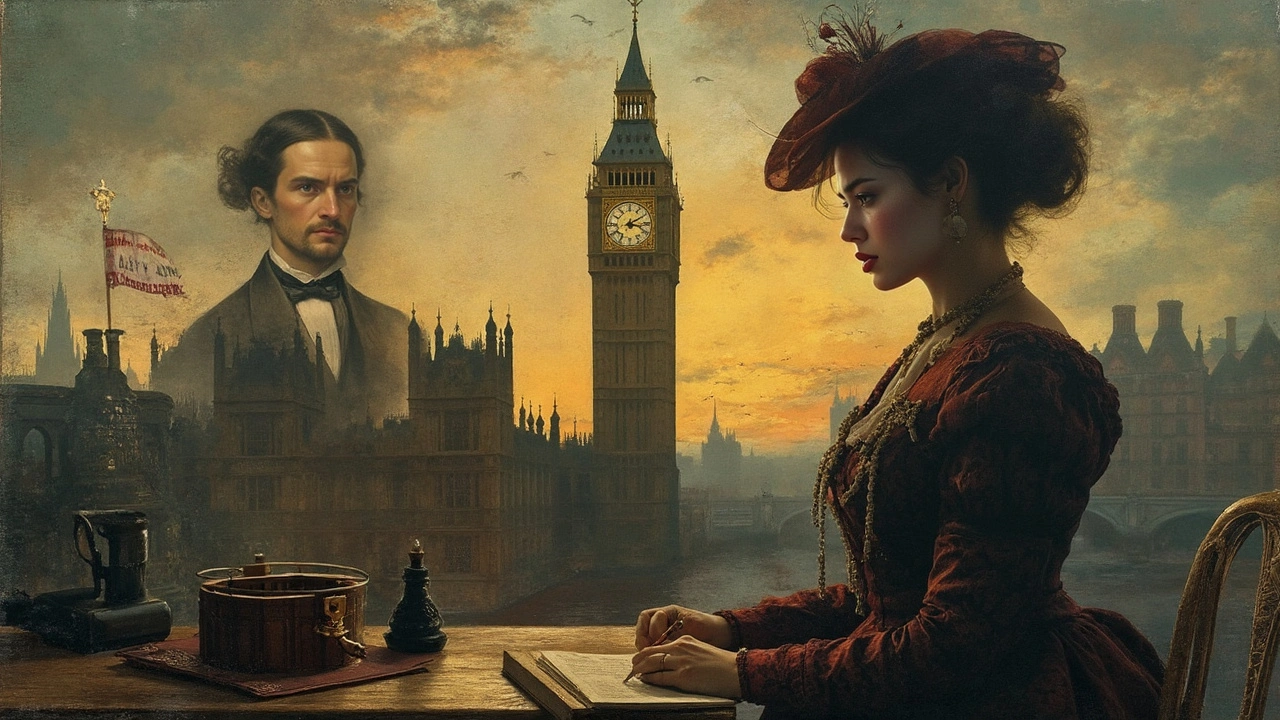
Unpacking the Myths and Real Legacy
Ask around, and you’ll hear some wild stories about courtesans. Movies and novels often paint them as either mysterious rebels or tragic outcasts. But honestly, that doesn’t come close to the whole picture. Let’s clear up a few of the big myths, and then dig into what their legacy actually looks like in art and culture today.
First, one of the biggest misconceptions is that courtesans were only about glamour or scandal. Take Cora Pearl in Paris or Veronese’s favorite models in Venice—these women were often fluent in several languages, experts in music, and even political advisers to powerful men. They mixed with writers, painters, and composers not just as muses, but genuine collaborators. If you traced the spark for some major works, it often begins with a late-night chat in their drawing rooms.
Another stereotype: that courtesan influence faded with time. Not even close. For example, Japanese oiran (a high-status courtesan) sparked not only Edo-period fashion but left their stamp all the way to today’s runway trends in Tokyo. Art circles in 19th-century Paris kept borrowing elements from their style and attitude long after the Belle Époque was over.
Let’s put some real facts on the table. Here’s a quick look at how famous works are tied back to courtesan influence:
| Work | Artist | Courtesan Involved |
|---|---|---|
| "Woman with a Parrot" | Édouard Manet | Valtesse de la Bigne |
| "Moulin Rouge" | Toulouse-Lautrec | La Goulue (Louise Weber) |
| "Memoirs" | Nell Gwynn (herself) | Nell Gwynn |
| "Madame Butterfly" opera | Puccini | Inspired by Nagasaki’s courtesan culture |
You can still spot the ripple effects around the world. Some modern artists and designers openly credit historical courtesans for their inspiration. Writers like Colette—once dismissed for their backgrounds—are now celebrated as trendsetters and boundary-pushers in the arts.
So, what’s the real legacy? It’s less about scandal and more about this: courtesans broke down barriers between different worlds. They brought together art, music, fashion, and even politics, often by just being in the room when creative sparks flew. If you’re interested in art or culture, you can thank a courtesan or two for making things a whole lot more interesting than the history books let on.
